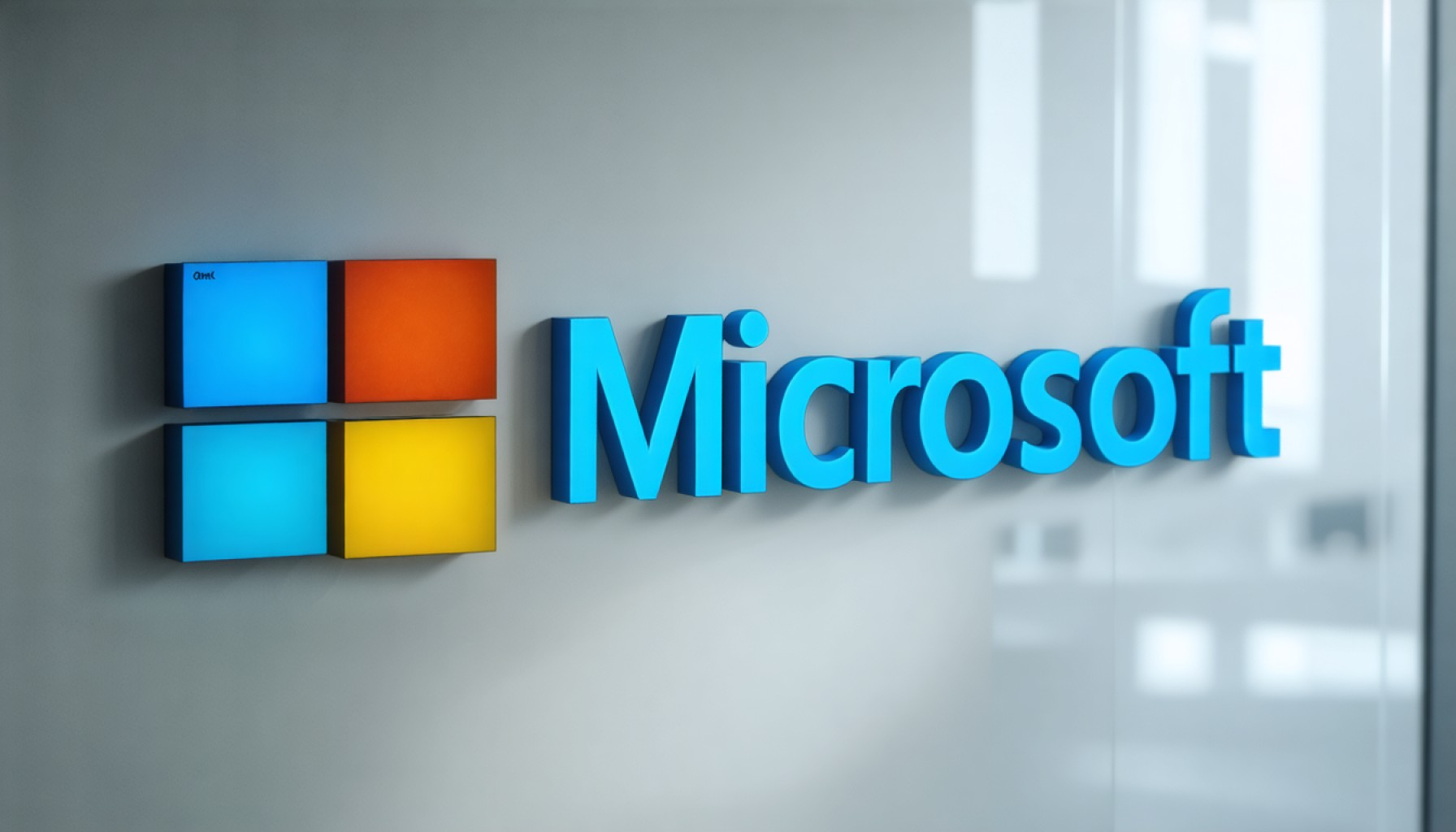
- Microsoft, founded by Bill Gates and Paul Allen, revolutionized computing by developing software for the Altair 8800 and partnering with IBM to create MS-DOS, leading to widespread adoption of personal computers.
- The release of Windows 95 marked a turning point in user interaction with computers, introducing features like the desktop, File Explorer, and the Recycle Bin.
- Microsoft Office, launched in 1989, transformed productivity with applications that are now integral to businesses, education, and households.
- Microsoft expanded into gaming with the Xbox in 2001 and entered cloud computing with Azure in 2008, showcasing diversification.
- The Surface line, launched in 2012, highlights Microsoft’s innovation in combining hardware with software solutions.
- Artificial Intelligence stands at the forefront of Microsoft’s future, aiming to integrate AI into Windows, Office, and other platforms.
- Celebrating 50 years, Microsoft continues to transform industries and daily life through relentless innovation and vision.
Amidst the ever-evolving landscape of technology, Microsoft remains a beacon of ingenuity and relentless innovation. Founded a half-century ago by the visionary Bill Gates and the ingenious Paul Allen, this tech giant started its journey in a modest Albuquerque garage, crafting software for the Altair 8800, an early milestone in personal computing.
The spark that ignited Microsoft’s meteoric rise came in 1980, with a pivotal deal to provide an operating system for IBM’s inaugural personal computer. This strategic move birthed MS-DOS, which reigned supreme over the burgeoning realm of IBM-compatible PCs throughout the ’80s. As technology advanced, so did Microsoft’s ambitions, culminating in the release of Windows 1.0 in 1985—a step towards realizing Gates’ dream: a personal computer on every desk and in every home.
It’s hard to overstate the impact of Windows 95, a watershed moment in 1995, when technophiles queued eagerly to embrace this revolutionary operating system at the stroke of midnight. Windows 95 infused computational life with now-universal features: the desktop, File Explorer, My Documents, and the ubiquitous Recycle Bin—transforming user interaction with computers forever.
Meanwhile, Microsoft’s ingenuity extended beyond operating systems. The 1989 birth of Office revolutionized productivity, initially gracing Mac screens before conquering the Windows domain. This suite of applications, indispensable in modern-day life, evolves constantly, powering businesses, educational institutions, and households, now even infiltrating our web browsers.
Microsoft’s venture into hardware began with trepidation, but the advent of the Xbox console in 2001 marked a decisive entry into gaming that enthralled millions globally. This was followed by the Azure cloud platform in 2008, providing the digital infrastructure for businesses worldwide, and Bing, a robust competitor in the search engine arena.
The Surface lineup, debuting in 2012 with Windows 8, emerged as a standout success. It epitomizes Microsoft’s innovation in seamlessly integrating hardware, operating systems, and productivity solutions—showcasing the relentless pursuit of cutting-edge advancements.
As Microsoft envisions the next chapter, artificial intelligence stands at its forefront. The company’s ambitions paint a world where AI not only transforms Windows and Office but infiltrates every corner of its expansive empire, promising advancements as far-reaching as the starry-eyed dreams of Gates and Allen five decades prior.
Today in Redmond, Washington, amid the echoes of the past, Microsoft celebrates its golden jubilee. The event unfolds as a bridge between yesteryears of breakthrough achievements and an exhilarating future. As Copilot features make their debut, the glimmers of Microsoft’s next evolution become undeniably clear.
In these transformative decades, Microsoft has etched a legacy of innovation, adaptability, and expansive vision. As the pages of history turn, the company’s journey underscores a simple yet profound truth: innovation is not just about technology; it is about transforming dreams into reality, impacting not only industries but the very fabric of our daily lives.
Microsoft’s Journey: Unveiling Hidden Facts and Future Prospects
Microsoft has been a cornerstone of technological innovation and evolution for over five decades. While the origins of this tech giant in a modest Albuquerque garage are well-documented, there are numerous dimensions of Microsoft’s journey and future prospects that merit further exploration.
Unexplored Facts and Insights
1. Evolution of Microsoft’s Operating Systems:
Beyond MS-DOS and Windows, Microsoft has consistently refined its operating systems. Windows 10, for example, brought innovations such as the digital assistant Cortana and a new browser, Edge. The transition to Windows 11 further exemplifies Microsoft’s dedication to user experience, embracing a more streamlined interface and enhanced functionality.
2. Office Suite’s Evolution:
The Microsoft Office Suite’s journey from its 1989 inception to its current status is marked by milestones such as the transition to Office 365, reflecting a shift towards cloud computing and subscription-based models. These changes ensure continuous updates and accessibility across devices.
3. Gaming Innovations:
Microsoft’s Xbox series has continually pushed the boundaries of gaming technology. The Xbox Series X, launched in 2020, offers cutting-edge hardware capabilities and services like Game Pass, which signifies the shift towards gaming as a service.
4. Cloud Computing and Azure:
Azure’s development has been a game-changer. It supports a myriad of tools, including AI and machine learning services, facilitating digital transformation across industries. Azure’s sustainability focus aims to run on 100% renewable energy by 2025.
5. AI Integration:
Copilot and advancements in AI signify a shift towards automation and intelligent assistance within the Windows ecosystem. Microsoft’s investments in AI research are shaping the future of work and productivity.
How Microsoft Impacts Various Sectors
Education: Microsoft tools like Teams and OneNote have transformed remote learning, offering collaborative environments for educators and students.
Business: Microsoft Dynamics 365 integrates AI, driving decision-making processes and streamlining operations in diverse business environments.
Healthcare: Microsoft Cloud for Healthcare provides interoperability with existing healthcare systems, enhancing patient experiences and outcomes.
Controversies & Limitations
Microsoft faces ongoing scrutiny over privacy concerns, particularly related to data collection and user consent in Windows and other services. The company is also under competitive pressure in the search engine market despite Bing’s capabilities.
Security & Sustainability
Microsoft is investing heavily in security, evident in initiatives like Microsoft Defender. The company is also committed to sustainability, with a pledge to be carbon negative by 2030.
Market Trends & Predictions
Future trends suggest a significant rise in cloud services, AI, and edge computing. Microsoft is poised to capitalize on these with Azure advancements and AI-powered solutions, setting a competitive edge in the digital transformation era.
Actionable Recommendations
– For Businesses: Utilize Microsoft 365 and Azure to optimize operations and leverage AI for better analytics.
– For Gamers: Explore Xbox Game Pass for a comprehensive gaming library at a subscription cost.
– For Developers: Engage with Azure’s AI and machine learning tools for innovative project solutions.
For those interested in exploring more about Microsoft’s comprehensive offerings, visit the official Microsoft website.
In conclusion, Microsoft’s evolution is a testament to strategic innovation and adaptability. As it navigates the challenges and opportunities of AI and cloud computing, Microsoft continues to shape the technological landscape, resonating with the foundational dreams of its visionary founders.



